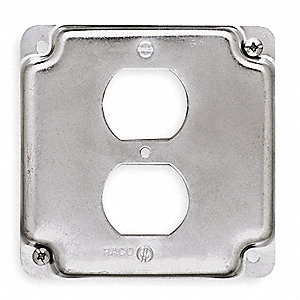Well, I think there are some things to consider first. If you supply this box with a qualified EGC conduit that has no separate EGC conductor, then I think Infinity is correct. Now if you supply that same box with NM cable or use a separate EGC in a metallic conduit system, then the EGC would have to be bonded to the box in an approved manner, but it would not have to be bonded to the EGC terminal of the recep. In other words, you can't run an EGC and just connect it to the recep. and not the box.
By the way, I think you mean 8/32 screws?


